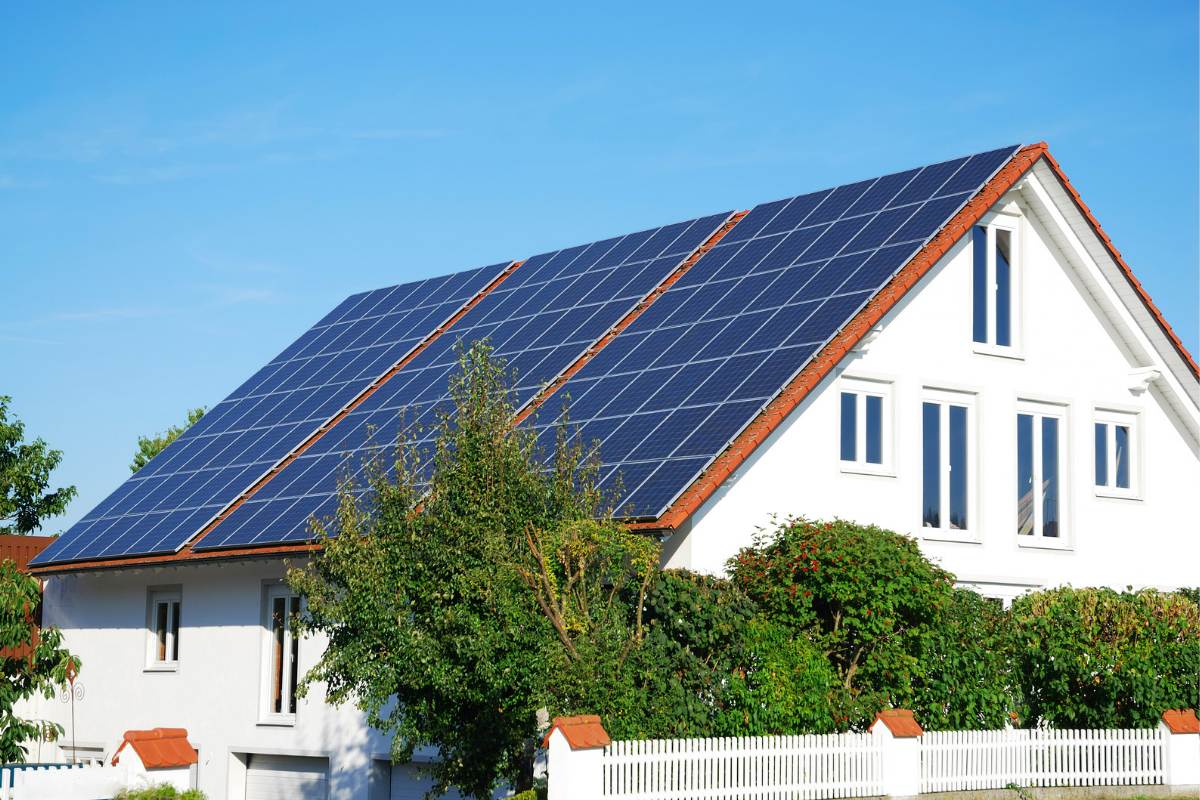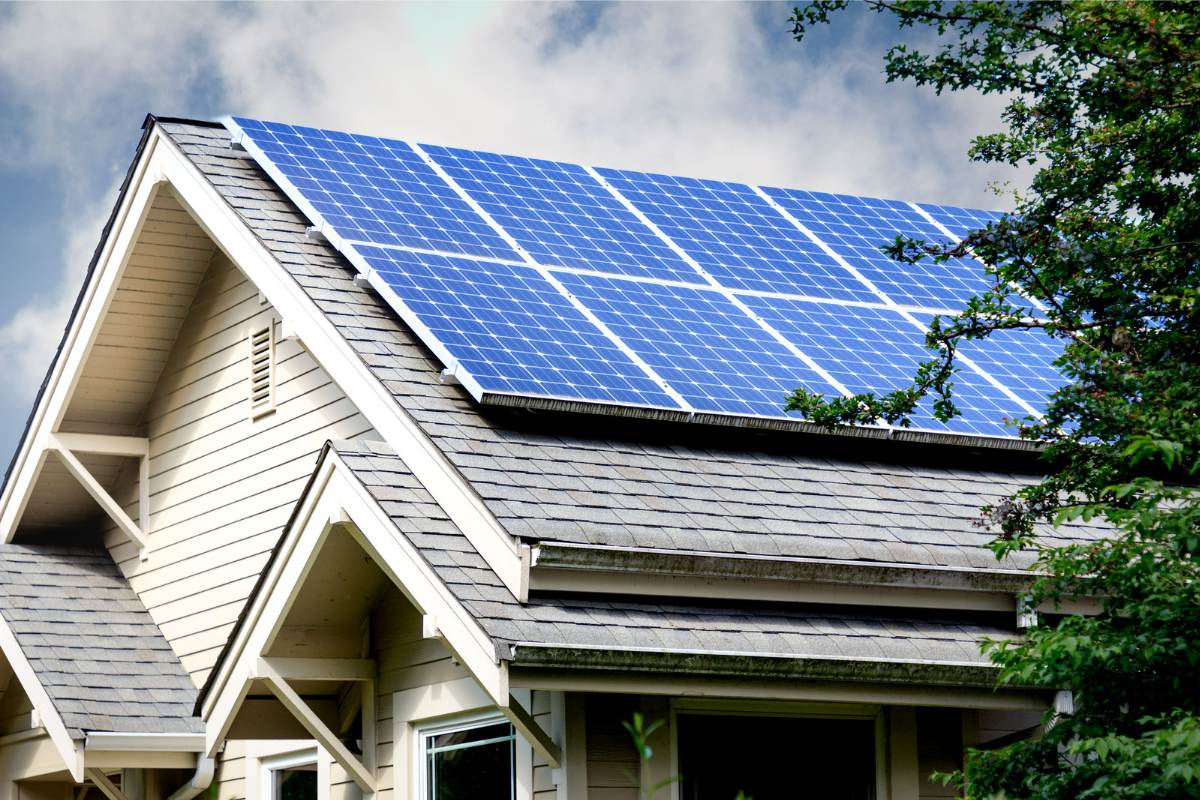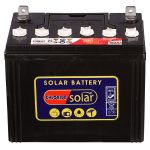Solar installations are quickly turning a favorite means of generating electricity for the average home in Oregon. The rapid rise or prominence of the solar electric system has reduced the citizens’ dependence on the state’s utility companies, such as Pacific Power and Portland General Electric.
If you’re a resident of Oregon, you’ll be eager to know what’s involved in installing a renewable energy system, how many solar panels can do the job for you, the cost of generating solar electricity, and so many more. This is where we come in. Read on to get the knowledge you seek from this comprehensive guide.
Reasons to Install Solar Panels in Oregon
This is the same as asking, “What are the benefits of installing PV systems in Oregon?” or “Are solar panels worth it in Oregon?” It’s normal to be skeptical. After all, there’s reliable electricity from the grid, so how is Oregon solar panel installation relevant to me? The following reasons will answer that question in detail.
Reduces Energy Costs
The dream of every homeowner is to either pay fewer bills or not have to pay any bills at all. While this is not realistic, reducing or eliminating your energy bill is a real possibility. Using a solar system helps you save a significant amount of money over time because you’ll be less reliant on or totally independent of the grid to have electricity.
If you’re using a grid-tied or hybrid solar system, your energy bills can reduce by as much as 50%. You even get to export excess energy back to the grid and earn utility credits via net metering. On the other hand, off-grid solar panel systems totally eliminate the need to pay bills because all your electricity is sourced from your solar panels.
Save Money
This will likely bring doubts if you don’t understand how solar power works and or don’t realize how much you’ve been spending on grid power or will spend in the future. First of all, electricity costs will only get higher in the coming years thanks to inflation. Your annual electricity bills can spike from $7k to $7,900. Let’s do a little maths so you can understand it better.
The average solar system in Oregon is 5KW, so we’ll use it for our analysis. The average cost of a 5KW solar system in Oregon is $12,835 – $17,365. Bear in mind that solar systems have an average lifespan of 25 years. On the other hand, the annual electric utilities bill in Oregon is $1,704. Multiplying that by 25 years will give us $42,600. That’s how much you’ll spend on your electric bill within 25 years if inflation doesn’t kick in. Have you seen the difference in prices? Let’s even consider the fact that you may replace the battery and inverter after a decade and the cost will still be drastically lower than the cost of conventional electricity without inflation costs factoring in. That’s how much money you’ll save.
Improves Home Value
If you install a solar system on your property and proceed to put it for sale after some years, it will sell much quicker and fetch better prices than homes without solar installation. The reason for this is that prospective house buyers know that purchasing a home with a solar system means they will spend a small amount or nothing at all to pay energy bills.
Zero Carbon Footprint
Solar energy is renewable energy and clean energy. Some even refer to it as green energy. The bottom line is that solar power is incredibly eco-friendly, just like other renewable energy sources. It has no negative impact on the environment and doesn’t emit greenhouse gases like fossil fuels. It harnesses energy from the sun’s rays to generate usable electricity for the home.
Lastly, using solar PV systems (off-grid) insures your home from power outages as a result of a natural disaster or state-wide maintenance on the power lines. You’ll continue enjoying energy no matter what.
Low-maintenance
Solar systems are almost stress-free to maintain. The solar panels can be cleaned or wiped twice in a year and the battery and inverter may need to be replaced once in ten years.
Durability
The solar system has an average lifespan of 25 years. Some brands are known to manufacture solar panels that can last for 35 or 40 years.
Self-reliance
Homeowners with a PV system don’t depend on the electric grid for their energy usage and this makes them self-reliant. Also, they’re not affected by power outages.
Factors Affecting the Cost of Installing Solar Panels in Oregon
Before you install solar panels on your property, you ought to know the factors that influence how much it will cost you. Let’s take a look at some of them;
Type of Solar Power System
We’ve already discussed them before – the off-grid, grid-tied, and hybrid solar power systems. The type of system you install determines how much you’re going to spend because they vary in price. The cost of installing an off-grid system will be higher than the cost of installing a hybrid or grid-tied system because of the battery storage it comes with.
Solar Power System Size
This ties directly to the number of solar panels you want to install. A 5-KW system will require fewer solar panels than a 7.5-KW system and will also be more affordable to install. This also ties directly to the size of your home and your monthly energy consumption. The bigger your home, the larger the capacity of the solar system and the more money it will cost you to install solar panels.
The Solar Contractor
The cost of installing a solar panel system is largely dependent on the solar companies because they charge differently. Some solar installers are more budget-friendly while others are more pricey. It’s important to get quotes from 3-5 solar companies to get the best deal on the cost of installing a solar energy system.
The Absence or Presence of Oregon Solar Incentives
Solar rebates, tax credits, and incentives are significant because they offset the cost of residential solar installations. Thankfully, there are Oregon solar panel incentives that have been very beneficial to homeowners. We recommend Oregon residents take advantage of the solar rebate program and other solar incentives or request a solar loan if necessary.
Type of installation
Where you install solar panels also determines how much it’s going to cost you. Homes with rooftop solar panels spend less on solar system costs than homes with ground-mounted solar panels. In most cases, if your roof size is insufficient for the capacity of the solar panel system, the ground is the designated site for installation and that means more expenses for you.
The Cost of Installing Solar Panels in Oregon
Let’s look at the various prices of solar systems in Oregon using capacity as a metric. The original solar prices include;
- 3 kW – $9,060
- 4 KW – $12,080
- 5 KW – $15,100
- 6 KW – $18,120
- 7 KW – $21,140
- 8 KW – $24,160
- 9 KW – $27,180
- 10 KW – $30,200
The post-ITC prices of the above-mentioned PV systems in Oregon include;
- 3 kW – $6,704
- 4 KW – $8,939
- 5 KW – $11,174
- 6 KW – $13,409
- 7 KW – $15,644
- 8 KW – $17,878
- 9 KW – $20,113
- 10 KW – $22,348
Have these local solar incentives in mind when you want to purchase solar panels.
How to Calculate How Many Solar Panels You Need

To know how many Oregon solar panels you need to install in your home, you need to first know how much energy you consume on a monthly basis. This is stated on your monthly utility bill. You also need to know the amount of peak sunshine hours in Oregon.
The formula for calculating the number of solar panels you need = hourly energy consumption x peak sunshine hours/panel wattage
Let’s get our values for the calculation. The average monthly energy consumption in Oregon is 893kWh. To get the hourly energy consumption, we’ll have to first break this number down to daily energy consumption.
That’s 893kWh/30 = 29.76 kWh. To get the hourly consumption, that’s 29.76kWh/24 = 1.24kWh (1240W)
The amount of sunshine hours in Oregon is 4.1 hours. Let’s go with a panel wattage of 300W.
So applying the formula, that will be 1240 x 4.1/300W = 5084W/300 = 16.9 (approx. 17) panels.
We’ll need fewer solar panels if we calculated with a higher panel wattage and more panels if we calculated with a lower panel wattage.
How to Know if Your Home is Suitable for Installing a Solar System
Location
Certain locations are more suitable for solar installations than other locations because of the climatic conditions. As you know, the solar PV system depends on solar energy to generate electricity. So, a location with sufficient sunshine hours (tropical areas) has the potential to generate more electricity than areas with temperate climates. Oregon has 4.1 peak sunlight hours, putting it somewhere in the middle.
Roof’s Condition
A roof in great condition is ideal for installing solar equipment while a roof in poor condition isn’t. The reason is that solar panels add more weight to the roof and if it’s in a weakened state, it may cave in. Solar contractors always inspect the roof of the house to determine its suitability for an Oregon solar system.
If the roof is in good condition, they green-light the project. On the flip side, if the roof has depressed spots, leakages, or any other thing that indicates the roof is due for repair or replacement, the solar company will refuse to proceed with the project. Putting solar panels on a bad roof will just incur more expenses because when the condition of the roof worsens, you’ll have to remove the panels and repair or replace the roof before re-installing the panels. This will increase the total solar system cost, an avoidable scenario.
Roof Size
The larger the roof size, the more space it will have for the solar installer to place panels on. Houses with large roofs have a bigger solar potential than homes with small roofs.
Roof Tilt
The best roof tilt for a solar project is a south-facing roof because that’s the best direction/angle for the solar panels to be positioned as they will be at their most efficient state. Another suitable orientation is a west-facing roof.
Obstruction or Shading
Your property should have minimal shading or obstructions on the designated site for installation because when solar panels are shaded or their exposure to direct sunlight is tampered with, they won’t function optimally. This means their generation capacity will fall short of how much electricity they can actually generate.
What to Look for in a Solar Contractor in Oregon
- Their CCB license – this can be verified via Energy Trust of Oregon
- At least 3-5 years of industry experience
- A great track record
- Availability of a power purchase agreement, lease, or rebate
- Top-tier customer service
The Top Solar Installation Companies in Oregon
Sunlight Solar
- Year established: 1988 (more than 3 decades of experience)
- Address: 150 NE Hawthorne Ave Bend, Oregon
- Selling point: sells products from leading solar panel manufacturers
- Telephone: (541) 322-1910
- Website: https://sunlightsolar.com/
SunPower
- Year established: 1985
- Address: 4530 NE Dawson Creek Dr, Hillsboro, Oregon
- Selling point: 25-year warranty coverage
- Telephone: +1 503-961-9303
- Website: https://us.sunpower.com/
Purelight Power
- Year established: 2019
- Address: 541 Parsons Drive, Medford, Oregon
- Selling point: 25-year performance warranty coverage and 10-year workmanship warranty coverage
- Telephone: +1-541-816-4047
- Website: https://purelightpower.com/oregon-solar-company/
Tesla Energy
- Year established: 2006
- Address: 6132 NE 112th Ave, Portland, Oregon
- Selling point: 25-year performance warranty coverage and 12.5 years inverter warranty
- Telephone: +1 877 798 3752
- Website: https://www.tesla.com/solarpanels
Oregon’s Financial Incentives for Solar Installations
Oregon residents that are eligible get to receive a rebate of up to $5k for their solar panel systems and up to $2,500 for their battery storage systems. Homeowners with low or moderate house owners in Oregon enjoy a solar incentive of $1.80 per installed watt or 60% of the net cost. Homeowners who don’t earn low or moderate income, but are eligible for utility incentives get a rebate of 20 cents per installed watt. Lastly, homeowners who don’t earn low or moderate income and are not eligible for any utility credits get a rebate of 50 cents per installed watt.



